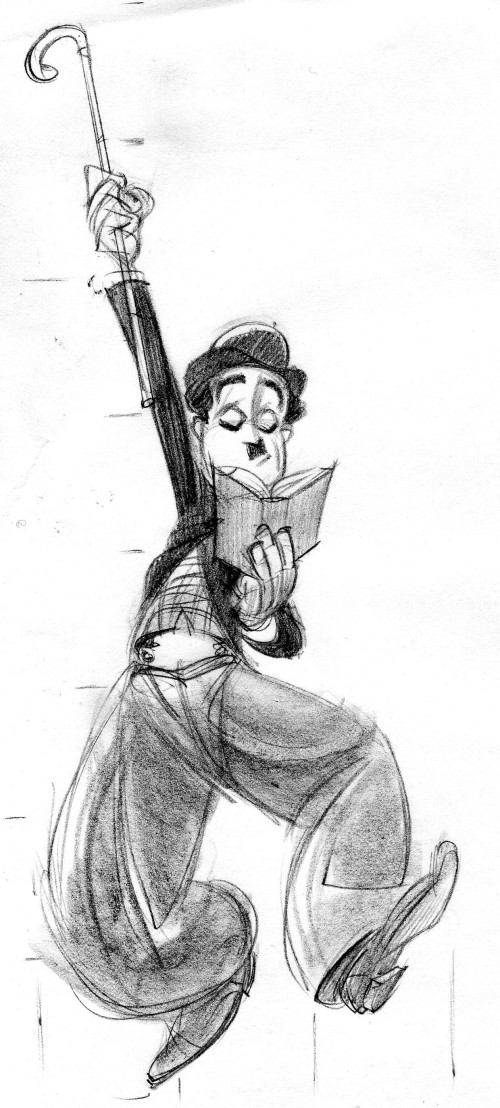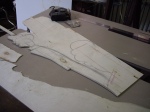new posts in all blogs
Viewing: Blog Posts Tagged with: chaplin, Most Recent at Top [Help]
Results 1 - 10 of 10
How to use this Page
You are viewing the most recent posts tagged with the words: chaplin in the JacketFlap blog reader. What is a tag? Think of a tag as a keyword or category label. Tags can both help you find posts on JacketFlap.com as well as provide an easy way for you to "remember" and classify posts for later recall. Try adding a tag yourself by clicking "Add a tag" below a post's header. Scroll down through the list of Recent Posts in the left column and click on a post title that sounds interesting. You can view all posts from a specific blog by clicking the Blog name in the right column, or you can click a 'More Posts from this Blog' link in any individual post.

By: Alice,
on 3/26/2014
Blog:
OUPblog
(
Login to Add to MyJacketFlap)
JacketFlap tags:
Law,
Religion,
Journals,
Current Affairs,
necklace,
chaplin,
*Featured,
European Court of Human Rights,
Andrew Hambler,
corporate dress codes,
Ian Leigh,
Nadia Eweida,
Oxford Journal of Law and Religion,
right of freedom of religion and belief,
Shirley Chaplin,
eweida,
hambler,
Add a tag
By Andrew Hambler and Ian Leigh
When a religious believer wears a religious symbol to work can their employer object? The question brings corporate dress codes and expressions of religious belief into sharp conflict. The employee can marshal discrimination and human rights law on the one side, whereas the employer may argue that conspicuous religion makes for bad business.
The issue reached the European Court of Human Rights in 2013 in a group of cases (Eweida and Others v. United Kingdom), following a lengthy and unsuccessful domestic legal campaign, brought by a group of employees who argued their right of freedom of religion and belief (under Article 9 of the Convention) had not been protected when the UK courts favoured their employers’ interests.
 Nadia Eweida, an airline check-in clerk, and Shirley Chaplin, a nurse, had been refused permission by their respective employers, British Airways and an NHS trust, to wear a small cross on a necklace so that it was visible to other people. The employer’s rationale in each case was rather different. British Airways wanted to maintain a consistent corporate image so that no ‘customer-facing staff’ should be permitted to wear jewellery for any reason. The NHS trust argued that there was a potential health and safety risk if jewellery were worn by nursing staff – in Ms Chaplin’s case a disturbed patient might ‘seize the cross’ and harm either themselves or indeed Ms Chaplin.
Nadia Eweida, an airline check-in clerk, and Shirley Chaplin, a nurse, had been refused permission by their respective employers, British Airways and an NHS trust, to wear a small cross on a necklace so that it was visible to other people. The employer’s rationale in each case was rather different. British Airways wanted to maintain a consistent corporate image so that no ‘customer-facing staff’ should be permitted to wear jewellery for any reason. The NHS trust argued that there was a potential health and safety risk if jewellery were worn by nursing staff – in Ms Chaplin’s case a disturbed patient might ‘seize the cross’ and harm either themselves or indeed Ms Chaplin.
Both applicants argued that their sense of religious obligation to wear a cross outweighed the employer’s normal discretion in setting a uniform policy. They also argued that their respective employers had also been inconsistent because their uniform policies made a number of specific accommodations for members of minority faiths, such as Muslims and Sikhs.
A major difficulty for both Eweida and Chaplin was the risk that their cross-wearing could be dismissed as a personal preference rather than a protected manifestation of their beliefs. After all many – probably most – Christians do not choose to wear the cross. The UK domestic courts found that the practice was not regarded as a mandatory religious practice (applying a so-called ‘necessity’ test) but rather one merely ‘motivated’ by religion and not therefore eligible for protection. This did not help either Eweida or Chaplin as both believed passionately that they had an obligation to wear the cross to attest to their faith (in Chaplin’s case this was in response to a personal vow to God). The other major difficulty for both applicants was that the Court had also historically accepted a rather strange argument that people voluntarily surrender their right to freedom of religion and belief in the workplace when they enter into an employment contract, and so the employer has discretion to set its policies without regard to interfering with its employees religious practices. If an employee found this too burdensome, then he or she could protect their rights by resigning and finding another job. This argument, ignoring the realities of the labour market and imposing a very heavy burden on religious employees, has been a key reason why so few ‘workplace’ claims have been successful before the European Court.
Arguably the most significant aspect of the judgment was that the religious liberty questions were in fact considered by the Court rather than being dismissed as being inapplicable in the workplace (as the government and the National Secular Society had both argued). The Court specifically repudiated both the necessity test and the doctrine of ‘voluntary surrender’ of Article 9 rights at work. As a result, it has opened the door both to applications for protection for a much wider group of religious practices in the future and for claims relating to employment. From a religious liberty perspective this is surely something to welcome.
Nadia Eweida’s application was successful on its merits. It is now clear therefore that an employer cannot over-ride the religious conscience of its staff due to the mere desire for uniformity. However, Chaplin was unsuccessful, the Court essentially finding that ‘health and safety’ concerns provided a legitimate interest allowing the employer to over-ride religious manifestation. This is disappointing, particularly since evidence was presented that the health and safety risks of a nurse wearing a cross were minimal and that, in this case, Chaplin was prepared to compromise to reduce them still further. Hopefully this aspect of the judgment (unnecessary deference to national authorities in the realm of health and safety) will be revisited in future.
Whether that happens or not it is clear that religious expressions in the workplace now need to be approached differently after the European Court’s ruling. The idea that employees must leave their religion at the door has been dealt a decisive blow From now on, if corporate policy over-rides employees’ religious beliefs, then employers will be under a much greater obligation to demonstrate why, if at all, this is necessary.
Andrew Hambler and Ian Leigh are the authors of “Religious Symbols, Conscience, and the Rights of Others” (available to read for free for a limited time) in the Oxford Journal of Law and Religion. Dr Andrew Hambler is senior lecturer in human resources and employment law at the University of Wolverhampton. His research focusses on how the manifestation of religion in the workplace is regulated both at an organisational and at a legal level. Andrew is the author of Religious Expression in the Workplace and the Contested Role of Law, a monograph due for publication in November 2014. Ian Leigh is a Professor of Law at Durham University. He has written extensively on legal and human rights questions concerning religious liberty. He is co-author of Rex Ahdar and Ian Leigh, Religious Freedom in the Liberal State (2nd edition, OUP, 2013).
The Oxford Journal of Law and Religion is hosting its second annual Summer Academy in Law and Religion this coming June. The title of this year’s academy is “Versions of Secularism – Comparative and International Legal and Foreign Policy Perspectives on International Religious Freedom.” The meeting will take place June 23 – 27 at St. Hugh’s College, Oxford. Click for more details about the conference, confirmed speakers, and registration.
The Oxford Journal of Law and Religion publishes a range of articles drawn from various sectors of the law and religion field, including: social, legal and political issues involving the relationship between law and religion in society; comparative law perspectives on the relationship between religion and state institutions; developments regarding human and constitutional rights to freedom of religion or belief; considerations of the relationship between religious and secular legal systems; empirical work on the place of religion in society; and other salient areas where law and religion interact (e.g., theology, legal and political theory, legal history, philosophy, etc.).
Subscribe to the OUPblog via email or RSS.
Subscribe to only law articles on the OUPblog via email or RSS.
Image credit: Fresh photo of girl’s neck with cross necklace. © tomasmikulas via iStockphoto.
The post ‘You can’t wear that here’ appeared first on OUPblog.

By: johnmanders,
on 2/6/2014
Blog:
John Manders' Blog
(
Login to Add to MyJacketFlap)
JacketFlap tags:
Hollywood,
caricature,
sketch,
character design,
silent film,
illustration process,
Chaplin,
Keystone,
display design,
Fatty Arbuckle's pants,
Add a tag
I was one of the fortunate 100 who recently received a brown paper packages tied up with string and was completely charmed by both the handmade nature of the mailing and the enclosed book, Matthew Loshan and Sophie Blackall‘s The Mighty Lalouche. A longtime fan of Blackall (going all the way back to her hilarious collaboration with Meg Rosoff, Meet Wild Boars) I was delighted with this elegant Cinderella story of a mild mailman who became a celebrated boxer.
Yesterday I read it aloud to my 4th grade class and was pleased that they enjoyed it too. So first of all, to those who wonder if it is a book with a too adult sensibility, I can say that these ten-year-olds were captivated by the story and the art. But sometime else occurred to us as we enjoyed the story — something no doubt very particular to us. And that is how much the images and verbal descriptions of the small and speedy boxer Lalouche reminded us of Charlie Chaplin (with whom, for those who don’t know, I’m a bit…er.. obsessed). Chaplin was incredibly capable on his feet too. He could dodge, feint, and dance around his opponents with an elegance and speed that seems not unlike that of the Lalouche of Blackall and Loshan. Not only did he do that in just about every one of his silent comedies, but he actually ended up in a few boxing rings. Perhaps most famously in City Lights, but also in an earlier short, The Champion. Take a look below and see if you can see any similarities between the Little Tramp and the Little Lalouche.


Chaplin the Musical is a labor of love by those who clearly appreciate, know, and get Charlie Chaplin in his complexity. As someone who has been a fan for most of her life and for some years now has been working on a children’s book about his character the Little Tramp, it was delightful to see how they managed to include so many little elements in this musical biography of his life.
The black and white setting, lighting, costumes, and make-up for the bulk of the show was very apt and made the vibrant red and colors of the final scene when Chaplin returned to receive a special Academy Award in the 1970s moving indeed.
The performers were uniformly excellent, but it was Rob McClure who was outstanding. I’d read about his preparations for this role, but was still skeptical until he came on and began. His movements were absolutely spot-on like Chaplin’s. His voice was remarkably close too. I appreciated most of all the subtle movements that anyone who had watched Chaplin in action many times as I have would appreciate. The little shrugs, smirks, kicks, and the like. He was so good when in the Little Tramp character that I wanted more!
Collapsing a life like Chaplin’s into a two and a half hour theatrical event is challenging indeed, but Christopher Curtis and Thomas Meehan pulled it off. I’m glad though that I read the small note in the program beforehand that ” The authors with the blessings of the Chaplin family, wish it to be known that a certain amount of dramatic license was taken in the course of turning the long and enormously complicated life of Charles Chaplin into a musical play. However, the spirit and true essence of the great man’s remarkable career has been scrupulously retained.”
For there were changes that those of us who know his story well would have noticed, say a slight alteration in the way he was first invited by Mack Sennett to come to work in the movies or the scene in which he first tried out his Little Tramp character. It is a highly sympathetic and respectful rendering of Chaplin’s life. My companion was unfamiliar with his life and found it fascinating. I was, of course, a bit skeptical of song and dance for a silent film star, but by and large it worked although I have to admit that none of the songs stood out to me in the way aspects of the staging did.
A few favorite touches of mine:
- Pretty much every time McClure played the Tramp. He was fantastic at this!
- The early scene where Young Charlie (played beautifully by Zachary Unger) sings when his mother can’t.
- The movie making scene at the Sennett Studio (even though it isn’t at all the way it actually happened but is a sort of compression of various aspects of that studio so worked well for this picky Chaplin know-it-all).
- The roll dance (from The Gold Rush) in a chorus line in “The Look-a-Like Contest.”
- Charlie watching Hitler and then mimicking him as he prepares to do “The Great Dictator.”
- The various moments with the beautifully replicated scenes from his movies.
- The final one when we see Charlie going INTO the movie to walk off down the road as he did so often. A beautifully done effect.
So for anyone who loves and knows Chaplin I recommend this as a very well-done and enjoyable experience. To end here is a lovely little behind-the-scenes video of their making one of those little movie scene recreations.



Chaplin the Musical is a labor of love by those who clearly appreciate, know, and get Charlie Chaplin in his complexity. As someone who has been a fan for most of her life and for some years now has been working on a children’s book about his character the Little Tramp, it was delightful to see how they managed to include so many little elements in this musical biography of his life.
The black and white setting, lighting, costumes, and make-up for the bulk of the show was very apt and made the vibrant red and colors of the final scene when Chaplin returned to receive a special Academy Award in the 1970s moving indeed.
The performers were uniformly excellent, but it was Rob McClure who was outstanding. I’d read about his preparations for this role, but was still skeptical until he came on and began. His movements were absolutely spot-on like Chaplin’s. His voice was remarkably close too. I appreciated most of all the subtle movements that anyone who had watched Chaplin in action many times as I have would appreciate. The little shrugs, smirks, kicks, and the like. He was so good when in the Little Tramp character that I wanted more!
Collapsing a life like Chaplin’s into a two and a half hour theatrical event is challenging indeed, but Christopher Curtis and Thomas Meehan pulled it off. I’m glad though that I read the small note in the program beforehand that ” The authors with the blessings of the Chaplin family, wish it to be known that a certain amount of dramatic license was taken in the course of turning the long and enormously complicated life of Charles Chaplin into a musical play. However, the spirit and true essence of the great man’s remarkable career has been scrupulously retained.”
For there were changes that those of us who know his story well would have noticed, say a slight alteration in the way he was first invited by Mack Sennett to come to work in the movies or the scene in which he first tried out his Little Tramp character. It is a highly sympathetic and respectful rendering of Chaplin’s life. My companion was unfamiliar with his life and found it fascinating. I was, of course, a bit skeptical of song and dance for a silent film star, but by and large it worked although I have to admit that none of the songs stood out to me in the way aspects of the staging did.
A few favorite touches of mine:
- Pretty much every time McClure played the Tramp. He was fantastic at this!
- The early scene where Young Charlie (played beautifully by Zachary Unger) sings when his mother can’t.
- The movie making scene at the Sennett Studio (even though it isn’t at all the way it actually happened but is a sort of compression of various aspects of that studio so worked well for this picky Chaplin know-it-all).
- The roll dance (from The Gold Rush) in a chorus line in “The Look-a-Like Contest.”
- Charlie watching Hitler and then mimicking him as he prepares to do “The Great Dictator.”
- The various moments with the beautifully replicated scenes from his movies.
- The final one when we see Charlie going INTO the movie to walk off down the road as he did so often. A beautifully done effect.
So for anyone who loves and knows Chaplin I recommend this as a very well-done and enjoyable experience. To end here is a lovely little behind-the-scenes video of their making one of those little movie scene recreations.



The Early Years of Buster Keaton
by Catherine Brighton
Roaring Brook 2008
I'm all about giving kids a more rounded cultural education and I think film is one of those areas where American kids are really at a deficit. I once met a teen who was planning to study film when he graduated high school who had never heard of Orson Wells, couldn't name a single film from the 1960's, didn't think
STATUS: This week has been about meeting with editors and my authors who have come to town so no “this is what editors are looking for” stories to regale you with. Although I did have coffee with a children’s editor who is looking for anything multicultural. What a refreshing change as I love multicultural stories as well. And rumor has it that Grand Central is going to be starting a Latino/Latina line over there.
What’s playing on the iPod right now? SELF CONTROL by Laura Brannigan
I’m not sure why people think that agenting is a way to get rich quick.
Snort. I can barely type that with a straight face but there seems to be this misperception.
I opened my own agency in August of 2002. I had a small business loan and a five-year plan in place when I embarked on what is a risky proposition. (Actually, starting any small business is risky not just agenting).
When I launched, I truly believed it would take 5 years for the agency to be profitable (and if it weren’t by then, I was in trouble). I hit profitable (as in not operating in the red—salary plus all expenses) in year three by a slim margin. Still, I was quite proud. I was definitely ahead of schedule.
So in those early years, I tracked reimbursable expenses (such as photocopies, postage, the basic stuff) and was reimbursed by the client. But here’s the kicker. The reimbursement ALWAYS happened after the sale of the project to a publisher. If the project didn’t sell, I ate the cost. I repeat. The author was not responsible for anything if the project didn’t sell. Was not recuperating those costs hard to swing in those early years? You betcha but I was unwilling to do otherwise despite my red bottom line.
I have heard of perfectly legitimate agencies (with trackable sales) billing their clients for reimbursable costs at the end of each year regardless of whether a project has sold or not. It’s not against AAR regulations. It’s certainly not sketchy per se but for me personally, I don’t agree with that practice.
For me, the billing for “costs” before any sale has the potential of being abused by agents and agencies that are either ineffectual or operating pretty close to the margin of actually not being legitimate. For my agency, I wanted to make sure the boundaries where absolutely clear.
Now I’m in year five and enjoying solid success, so what did I decide to do (and I actually did this two Januaries ago when I was becoming profitable in year three). I did away with reimbursed expenses.
Yep, you heard that right. I don’t track expenses and expect the client to reimburse—before or after a sale now. The agency foots the bill as the cost of doing business.
There are two exceptions though. The agency does track costs associated with International postage or wire transfers (as those are unusual) and we also do track book purchases used in selling subsidiary rights (because that can get expensive very quickly). We always email the clients first to find out if they want to provide the copies and if not, to check if the cost incurred is okay with them before we proceed.
Perhaps we’re crazy but I find that ultimately it’s not worth the time and effort to track it.
Why do I bring this up? Well, I haven’t talked about fees or reimbursable costs in a long time and I think it’s wise to keep talking about this issue. As I mentioned, legitimate agencies might have this practice and as long as they have a long list of documented sales (where it’s obvious their reputation is impeccable), it’s probably not a worry.
However, I would ALWAYS approach it with caution as there are many marginal agents/agencies that are happy to be reimbursed for submission expenses but don’t have the corresponding sales. And if you are going to be billed for those expenses, it should ALWAYS be accompanied and documented by receipts.
STATUS: TGIF and it’s a half day for me as I head up into the mountains to attend a wedding this weekend.
What’s playing on the iPod right now? MY CHERIE AMOUR by Stevie Wonder
And now we have reached the exciting conclusion of agency agreements. I’m sure you’ve been on the edge of your seats.
That last two clauses officially wrap it up.
There is an arbitration clause—that states if there is an issue we both agree to have it settled by arbitration and last but not least, the entire agreement and assignment clause.
This clause states that this is our entire agreement (hence why it’s at the end). There is also an assignment clause, which both parties would need to get written permission to do--except in the event that my agency merges with another agency and then the assignment simply happens.
Then it’s time for signatures etc. and the final form that all clients have to fill out in lieu of a W9 (which we have to have on file by law).
That’s all folks.
Have a great weekend.
STATUS: It’s been a busy day and now I have drinks with a client who is in town and then later with an editor from New York who is also in town. I like to think they come all the way just to see me.
What’s playing on the iPod right now? ROXANNE by The Police
We are pretty close to tackling all the clauses--in my agreement anyway.
The next clause is Risk In All Negotiations. Basically, I say I can’t guarantee that I can sell the book or get the client an acceptable offer and a client can’t sue me for it.
I’m an agent, not a miracle worker and although it doesn’t happen often, I sometimes can’t sell a project. Shocked gasps I know. There is no agent on this planet who sells 100% of what he/she takes on.
The next clause talks about governing law. Since my agency is based in Denver, then the agreement adheres to the laws of Colorado.
The last two clauses tomorrow and then on to Jamie Ford’s query.
STATUS: Oops. I almost forgot to blog today. Seriously, I was all proud of getting just about everything done that I had hoped to. It slipped my mind until now.
What’s playing on the iPod right now? THE CRYING GAME by Culture Club
We haven’t talked about agency agreements in a while so let me jump back in with clause 10 which is entitled Term of Agreement.
I’m not one to have a client stay with me if they aren’t happy with the representation (and vice versa) so in my agency agreement, either party can terminate the relationship with a thirty day written notice.
However, the clause also states that my agency remains the agency of record for all contracts negotiated while the agreement was in force. We also get to continue to pursue any secondary rights sales for material on which we sold the primary rights (for the life of that primary agreement.)
I also have a clause that doesn’t allow a client to do a bait and switch by having me do all the work to land a publishing contract only to have a client terminate the agreement (yet accept the publishing contract) so as not to pay my 15% commission. Not cool. So there is language in this clause to protect the agency from unethical authors.
And yes, folks, unethical authors do exist. I have many stories I could share on that score but I won’t. I may rant but I do try to stay mostly positive.
 Nadia Eweida, an airline check-in clerk, and Shirley Chaplin, a nurse, had been refused permission by their respective employers, British Airways and an NHS trust, to wear a small cross on a necklace so that it was visible to other people. The employer’s rationale in each case was rather different. British Airways wanted to maintain a consistent corporate image so that no ‘customer-facing staff’ should be permitted to wear jewellery for any reason. The NHS trust argued that there was a potential health and safety risk if jewellery were worn by nursing staff – in Ms Chaplin’s case a disturbed patient might ‘seize the cross’ and harm either themselves or indeed Ms Chaplin.
Nadia Eweida, an airline check-in clerk, and Shirley Chaplin, a nurse, had been refused permission by their respective employers, British Airways and an NHS trust, to wear a small cross on a necklace so that it was visible to other people. The employer’s rationale in each case was rather different. British Airways wanted to maintain a consistent corporate image so that no ‘customer-facing staff’ should be permitted to wear jewellery for any reason. The NHS trust argued that there was a potential health and safety risk if jewellery were worn by nursing staff – in Ms Chaplin’s case a disturbed patient might ‘seize the cross’ and harm either themselves or indeed Ms Chaplin. 





























































This is so amazing and I am going to have to look into the Mighty Lalouche. I am a huge Chaplin fan, though I came in to his world rather differently, falling in love with the Robert Downey Jr performance which led me to his films, I have a whole collection now of shorts and features which I adore. He is a true cinematic legend. As a footnote, my father preferred Laurel and Hardy so I was not exposed to Chaplin; he finds his movies rather boring. My opinion is that though I love L & H, Chaplin gives the viewer so much more emotion.